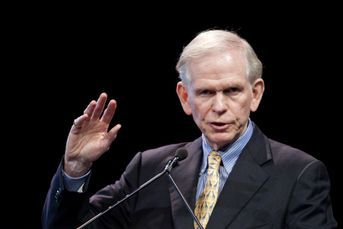April jobs report speeds ticking of bond bomb
Pickup in hiring, drop in jobless rate pushes stocks to record high ground — and Treasuries down.
The ticking of the bond bomb just got quicker and louder.
For proof, look no further than today’s better-than-expected U.S. jobs report for April, which quickly sent Treasury prices sharply lower and stocks sharply higher.
According to the Labor Department, payrolls expanded by 165,000 workers last month following a revised 138,000 increase in March that was larger than first estimated. The median forecast of 90 economists surveyed by Bloomberg projected a 140,000 gain. Revisions added a total of 114,000 jobs to the employment count in February and March.
Hiring advanced last month even as employers witnessed the onset of planned government spending reductions, which the Federal Reserve said are hindering growth.
“This is an outstanding jobs report,” Darrell Cronk, the New York-based regional chief investment officer at Wells Fargo Private Bank, which oversees $170 billion, said by phone. “The data is strong enough to confirm that the expansion is intact, and the bones of this recovery are where they need to be.”
U.S. 10-year notes yields reached a one-week high as the employment rate unexpectedly fell to 7.5%, a four-year low. The benchmark 10-year note yield rose seven basis points, or 0.07 percentage point, to 1.70% shortly after the payroll report was issued, according to Bloomberg Bond Trader prices.
Stocks rallied, sending the Standard & Poor’s 500 Index above 1,600 for the first time, as the jobs report tempered expectations of a second-quarter slowdown. The blue chip Dow Jones Industrial Average pierced the 15,000 level for the first time.
“This nonfarm payroll number establishes a floor under Treasury yields,” said Donald Ellenberger, who oversees about $10 billion as co-head of government and mortgage-backed securities at Federated Investors in Pittsburgh. “The Fed continues to have its foot on the accelerator. That will keep a lid on how high Treasury yields can go. At the same time, this was a pretty decent payroll number, so that’s likely to put a floor on how low yields can go.”
The U.S. central bank has been buying $85 billion of bonds each month since the start of the year, $45 billion in Treasuries and $40 billion of mortgage debt, in an effort to hold down borrowing costs and encourage economic growth. It has kept its benchmark interest-rate target for overnight lending between banks in a range of zero to 0.25 percent since 2008 to support the economy.
“The demise of this recovery is grossly exaggerated,” said Eric Green, global head of research at TD Securities Inc. in New York. “We’re still in a soft patch, but the job market is not falling apart. The U.S. labor market is in much better shape than most people feared.”
Of the 404 S&P 500 companies that have reported profit so far this reporting season, 73% exceeded analysts’ earnings predictions while 53% missed on sales, data compiled by Bloomberg show. Profit at S&P 500 companies rose 1.1% in the first three months of the year, according to estimates compiled by Bloomberg.
“Nobody has been happy with top line growth for a while,” James Kee, president at South Texas Money Management in San Antonio, Texas, said in a phone interview. His firm oversees about $1.9 billion. “What we’ve seen on the top line is pretty consistent with what we’ve seen in the underlying economy, that is low, but positive private sector growth.”
— Bloomberg News —
Learn more about reprints and licensing for this article.








